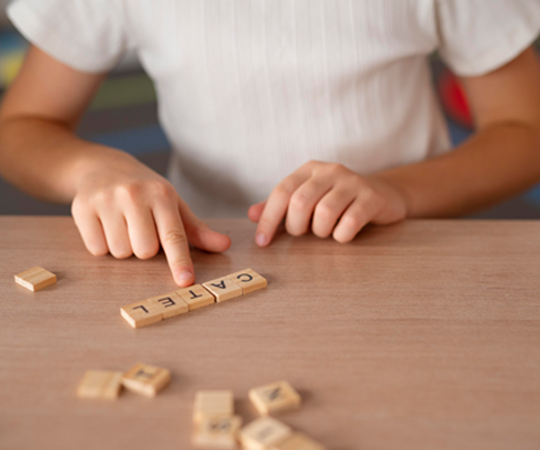SPECIFIC LEARNING DISORDER
A very popular opinion in our country is that when a child gets poor marks, they must be misbehaving in some way, or are stupid, incapable, or possibly retarded. So people tend to punish them, teachers might even go so far as to ridicule them in front of their class or parents. These definitions are old and inaccurate. People think these methods help ‘set a child straight’, but all it does is lower their self-esteem or increase their aversion to studying. Marks or even IQ scores cannot fully determine intelligence or a person’s potential. It is perhaps easier for people to attribute the shortcomings to a child’s incompetence or laziness. Whereas, for a child to be underperforming in school there can be plenty of other reasons such as being a slow learner, or an incompetent teacher, maybe they have some personal issues, or it could be a learning style confusion or a learning disorder.
Specific Learning Disorder, or SLD for short, are neurodevelopmental disorders, in which certain parts of the brain, which perform motor or communication functions gets affected. This leads to problems in input processing or output of information, both verbally or non-verbally.
The signs can be,
- Difficulty in following directions or remembering routines
- Pronouncing words
- Difficulty reading comprehension or math skills
- Difficulty in reading and writing
- Poor handwriting
- Uses different spellings for the same words


The common forms of learning disorder
The common forms of learning disabilities are dyslexia (problems in reading a given text, or understanding language/letters/symbols), dysgraphia (problems in writing, fine motor skills), dyscalculia (problems with arithmetic and numbers.), nonverbal learning disabilities (problems in learning /understanding nonverbal cues from environment) and oral/written comprehension (problems with understanding or expressing oneself in oral or written form.).
The cause of SLD does not lie in economic disadvantage or lack of proper teaching or even in cultural differences. More identifiable and probable causes of SLD are
- Hereditary
- Complications during pregnancy or birth
- Head injuries. Malnutrition, etc.
SLD differs from person to person
SLD differs from person to person, ranging in symptoms, dysfunction, and age. 5-10 years ago, SLD was recognized only after entering the senior secondary level of education as the level of difficulty is very high. But recently parents have started becoming more aware and getting their children tested at an early age so they a receive proper intervention as early as possible.
At Udgam we work to spread awareness and work on interventions, suitable to the child’s strengths. We encourage parents to support their children through this process of receiving special education and to support their growth.
DYSLEXIA
Learning disorders have become fairly common in our vocabulary and yet we do not have much knowledge about them. The current trend of picking up information from distorted sources like movies or tv is popular, but quoting these movies as a source of information is improper. Having an SLD is not all dramatic. Mostly it just creeps up slowly so much so that a child might fail to recognize that he is any different. The child might see it as a failure in understanding or retaining the given information. Similarly, the parents might think it is the child’s incompetence and not that they might require something different to get through. One such type of SLD made famous due to movies is Dyslexia.

Dyslexia is one of the most common forms of learning disorder
Dyslexia is one of the most common forms of learning disorder, it includes problems in reading, identifying the sequence in which letters occur to form words, and also associating letters with their respective phonetic sounds. This neurological disorder, affects the language-processing areas of the brain, making it hard for the child to understand a language. The child learns how to spell a word and then forget it. Also, if the word is made up of two syllables, understanding those sounds becomes challenging. Like the word “unfortunately,” a dyslexic person might be able to understand “un” and “ly,” but not the remaining sounds. According to reports around 35 million children in India suffer from SLD, with 15% being dyslexic. That is only the number of children enrolled in schools, leaving behind a major chunk of unidentified data. We suggested getting your child assessed if they show any symptoms of dyslexia or any other learning disorders. Assessment is not bad; it just provides reassurance or an identifier depending on the results.
Doing it as early as possible, and maybe periodically if the symptoms reoccur, can help your child keep a track of their progress.Special education, individualized treatment plans, occupational therapy, and counselling are a few ways to help the child reach their potential. At Udgam, we request you to spread awareness to end the stigma attached to the chance to achieve our children’s bright future.
Know your Child better
